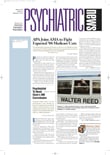As the body of efficacy evidence continues to grow, clinical trials of adult medications in children are adding strength to a long-held scientific secret: Children are not simply adults hiding in a smaller package, at least not when it comes to medications.
In 1997 the Food and Drug Administration Modernization Act (FDAMA) required the agency to promote research into pediatric use of adult medications through a “pediatric exclusivity” incentive program.
The program promised drug manufacturers an additional six months of patent protection for their branded medications in exchange for research on the use of those medications in children.
The FDAMA instructed the FDA to develop a list of medications approved for use in adults that were commonly used in children but had not been studied for safety or efficacy in pediatric populations. From that list, the FDA was to make written requests to the manufacturers of the drugs on the list asking for clinical data on at least the safety of the medications in children and adolescents. Efficacy studies were not required.
According to information posted on the FDA Web site, as of August 22, 88 medications had been studied in children, resulting in labeling changes to 58 and the granting of pediatric exclusivity to 53. To date, the FDA has issued 242 written requests for pediatric data.
While the FDA requested pediatric data on numerous psychotropic and related medications, only two antidepressant, one antiseizure, and two antianxiety medications have undergone pediatric labeling changes.
In 1998 midazolam (Versed) was relabeled to include data on effective dosing and time of onset and adverse-event information specific to pediatric populations. In 2000, fluvoxamine (Luvox) was relabeled to reflect data on dosing and the requirement for a dose adjustment in adolescents (increased dose) and girls aged 8 to 11 (decreased dose). Also that year, gabapentin (Neurontin) was relabeled to reflect neuropsychiatric adverse events in children aged 3 to 12.
Late in 2000, Lilly submitted data showing fluoxetine’s safety and efficacy in children and adolescents for both obsessive-compulsive disorder and major depression. To date, it remains the only antidepressant labeled as indicated for children and adolescents (
see related article on page 2). The fluoxetine studies documented decreased weight gain in children and the potential for switching of children into mania or hypomania. Specific dosing information was also included in the revised label.
Recently, studies of paroxetine (Paxil) created a stir when they failed to show efficacy in children and adolescents with major depression and raised significant safety concerns about suicidal thoughts and behaviors in pediatric populations. Those studies were prompted by the pediatric exclusivity provision.
In 2001 Bristol-Myers Squibb submitted data showing that the safety and efficacy of buspirone (Buspar) were not shown in patients aged 6 to 17 for generalized anxiety disorder. In addition, the studies found variable pharmacodynamic parameters that differed from those in adults. In many cases, including those above, studies prompted by the pediatric exclusivity clause of FDAMA (which was reauthorized by Congress in 2002) have found significant differences in the use of the medication in children and adolescents compared with adults.
A study in the August 20 Journal of the American Medical Association highlights those differences. The study, by four staff members of the FDA’s Office of Counter-Terrorism and Pediatric Drug Development, concluded that the FDAMA “has stimulated pediatric clinical studies, resulting in improved understanding of the pharmacokinetics of drugs prescribed in pediatric medicine, important dose changes, and improved safety for children taking certain drugs.”
Dianne Murphy, M.D., director of the FDA’s Office of Pediatric Therapeutics and a co-author of the report, noted in a press release that while the pediatric exclusivity program “has led to improvements, it is voluntary and cannot solve the problem alone.”
Indeed, the FDA has supported the Pediatric Research Equity Act (S 650), which was passed by the Senate and awaits action by the House of Representatives. The bill would restore a 1998 FDA regulation known as the pediatric rule under which the FDA could require drug companies to undertake clinical trials of medications in pediatric populations and submit data on safety and efficacy.
The pediatric rule was struck down by a U.S. District Court decision in October 2002. The court ruled that the FDA did not have legislative authority from Congress to require pediatric testing. S 650, which would give the agency that authority, has been supported by APA, the American Academy of Pediatrics, American Academy of Child and Adolescent Psychiatry, and AMA.
JAMA 2003 290 1033
